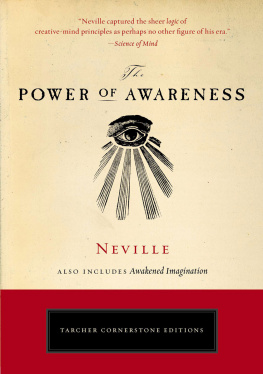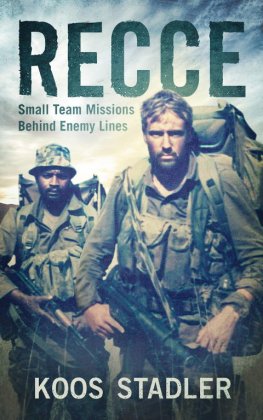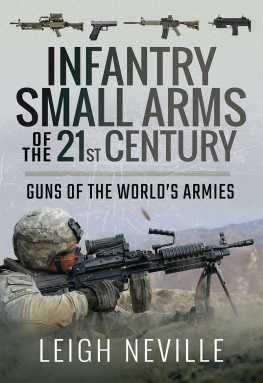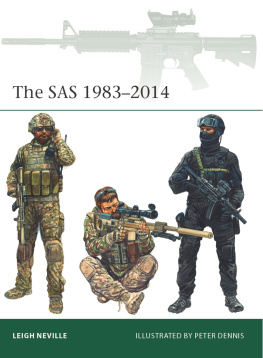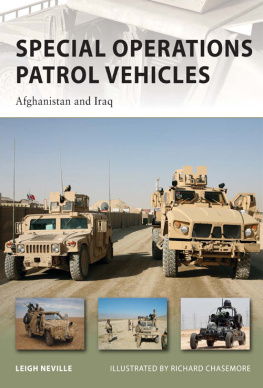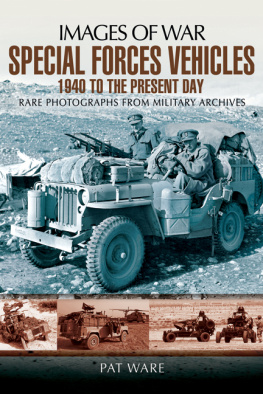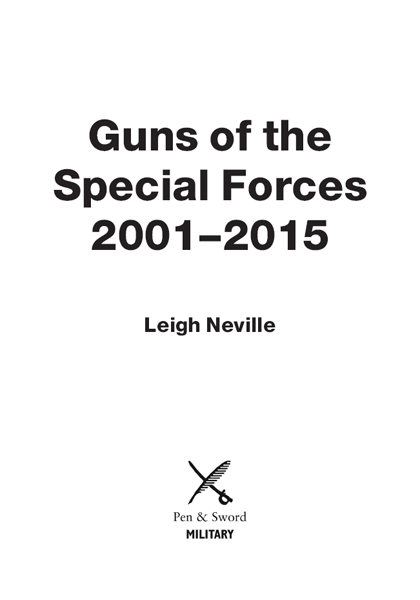
First published in Great Britain in 2015 by
PEN & SWORD MILITARY
An imprint of
Pen & Sword Books Ltd
47 Church Street
Barnsley
South Yorkshire
S70 2AS
Copyright Leigh Neville, 2015
ISBN: 978-1-47382-106-4
PDF ISBN: 978-1-47388-102-0
EPUB ISBN: 978-1-47388-101-3
PRC ISBN: 978-1-47388-100-6
The right of Leigh Neville to be identified as the author of this work has been asserted by him in accordance with the Copyright, Designs and Patents Act 1988.
A CIP catalogue record for this book is available from the British Library.
All rights reserved. No part of this book may be reproduced or transmitted in any form or by any means, electronic or mechanical including photocopying, recording or by any information storage and retrieval system, without permission from the Publisher in writing.
Typeset by Concept, Huddersfield, West Yorkshire, HD4 5JL.
Printed and bound in India by Replika Press Pvt. Ltd.
Pen & Sword Books Ltd incorporates the imprints of Pen & Sword Archaeology, Atlas, Aviation, Battleground, Discovery, Family History, History, Maritime, Military, Naval, Politics, Railways, Select, Social History, Transport, True Crime, and Claymore Press, Frontline Books, Leo Cooper, Praetorian Press, Remember When, Seaforth Publishing and Wharncliffe.
For a complete list of Pen & Sword titles please contact
PEN & SWORD BOOKS LIMITED
47 Church Street, Barnsley, South Yorkshire, S70 2AS, England
E-mail:
Website: www.pen-and-sword.co.uk
Contents
Introduction
As a teenager, the author of Guns of the Special Forces discovered a book that would literally change his life. That book was Guns of the Elite by George Markham. Subtitled Special Forces Firearms: 1940 to the Present, it documented the use of specialist small arms by special operations forces (SOF) across the globe. From the earliest days of legendary units like the British Special Air Service (SAS) in the Western Desert during the Second World War all shemaghs, beards and Tommy Guns right up to the rise in specialist counter terrorist intervention units in their archetypal black Nomex flight suits and balaclavas, the book had it all. First published in 1987, it was responsible for lighting the fire of what has become for the author a lifelong fascination with military small arms and in particular those employed by special operations units. That fascination has led ultimately to the book you hold in your hands.
Guns of the Special Forces is intended as an update or continuation of that wonderful work by George Markham. It takes its starting point from the beginning of what has become known as the Global War on Terror and focuses largely on this post-2001 era. To provide necessary context, some historical background is provided in each chapter, largely to explain how and why certain weapons systems, types and calibres have come to dominate the modern battlespace. The spotlight is, however, firmly on those small arms deployed during operations in Afghanistan, Iraq and other far-flung battlefields like Mali and Somalia.
Rather than a bland sales catalogue of who uses what, this book aims to examine each broad category of small arms employed by military SOF units in these counter insurgency and counter terrorism actions. Within each chapter we will investigate the specific operational needs that drive the procurement or development of a weapon or weapon type, how those weapons are then employed on the battlefield and by whom. We will also look in detail at what are the current and future trends in terms of SOF small arms development and the impact of the lessons learnt from Afghanistan and Iraq.
SOF is a broad term and some definition may be worthwhile, particularly as to how it differs from the more common term Special Forces. The United Kingdom for instance refers to all of their special operations units generically as Special Forces (indeed it is often shortened simply to UKSF), as do the Australians. The Americans and the Canadians, and increasingly most European nations, now use the term SOF to cover all manner of special operations units from Navy SEALs to Air Force Para Rescue Jumpers. In the United States, Special Forces also has a very distinct meaning, referring of course to the Army Special Forces who wear the famous Green Beret. For our purposes, SOF is the more inclusive and the term that will be used throughout the text.
Now that we have an agreed term to describe these soldiers, Marines, sailors and airmen, what exactly do they do and how does one define a special operation or indeed a special operator? Delta Force founder Colonel Charlie Beckwith once famously described a special operation as one that resulted in a medal, a body bag, or both. Admiral Bill McRaven, top Navy SEAL and former head of the Joint Special Operations Command (JSOC) and later the US militarys entire Special Operations Command (SOCOM) gave his version several years ago: [it is] conducted by forces specifically trained, equipped, and supported for a specific target whose destruction, elimination, or in the case of hostages, the rescue of, is a political or military imperative.
His former command SOCOM lists a number of core operations that it considers special operations:
Direct Action (DA)
Special Reconnaissance (SR)
Countering Weapons of Mass Destruction (C-WMD)
Counter Terrorism (CT)
Unconventional Warfare (UW)
Foreign Internal Defence (FID)
Security Force Assistance (SFA)
Hostage Rescue and Recovery (HR)
Counter Insurgency (COIN)
Foreign Humanitarian Assistance (FHA)
Military Information Support Operations (MISO)
Civil Affairs Operations (CA)
A brief perusal of these mission types illustrates the breadth of tasks that fall under the SOF banner. Almost all of these missions have been undertaken by the United States and Coalition SOF since 2001 in Iraq, Afghanistan, Somalia, Libya, Syria, Mali and elsewhere. Perhaps three of the most common mission types in the past decade have been Direct Action, Special Reconnaissance and Foreign Internal Defence and these can be used to provide some context for the operations that special operators have been called upon to conduct during the War on Terror.
Direct Action (DA) relates to short-term strike missions that are commonly designed to capture or kill a designated terrorist or insurgent high value target (HVT), such as a bomb maker or logistician (these operations are commonly referred to as Night Raids in Afghanistan). This perhaps exemplifies in the minds of the public the role of SOF and is often seen as the sexy end of the special operations continuum. Its not the purpose of this book to comment on the success or otherwise of the counter insurgencies in Afghanistan and Iraq, but many informed commentators have observed that in the wake of the September 11 attacks, DA quickly became the focus of SOF, sometimes to the exclusion of other, perhaps more longer term and impactful efforts, like Civil Affairs or Information Operations. The Abbottabad raid in pursuit of Usama bin Laden was the classic example of a Direct Action mission.
Special Reconnaissance (SR) often actively supports DA operations. As the title suggests, SR is the current terminology for what would have been known in Vietnam as long-range reconnaissance patrols. SR is the other bread and butter activity of most SOF units. It entails infiltrating into a hazardous location and establishing a covert observation post to monitor enemy activity. This may be done to track an enemy commander such as the fateful Operation Red Wings in Afghanistan (the subject of the book and Hollywood film
Next page





